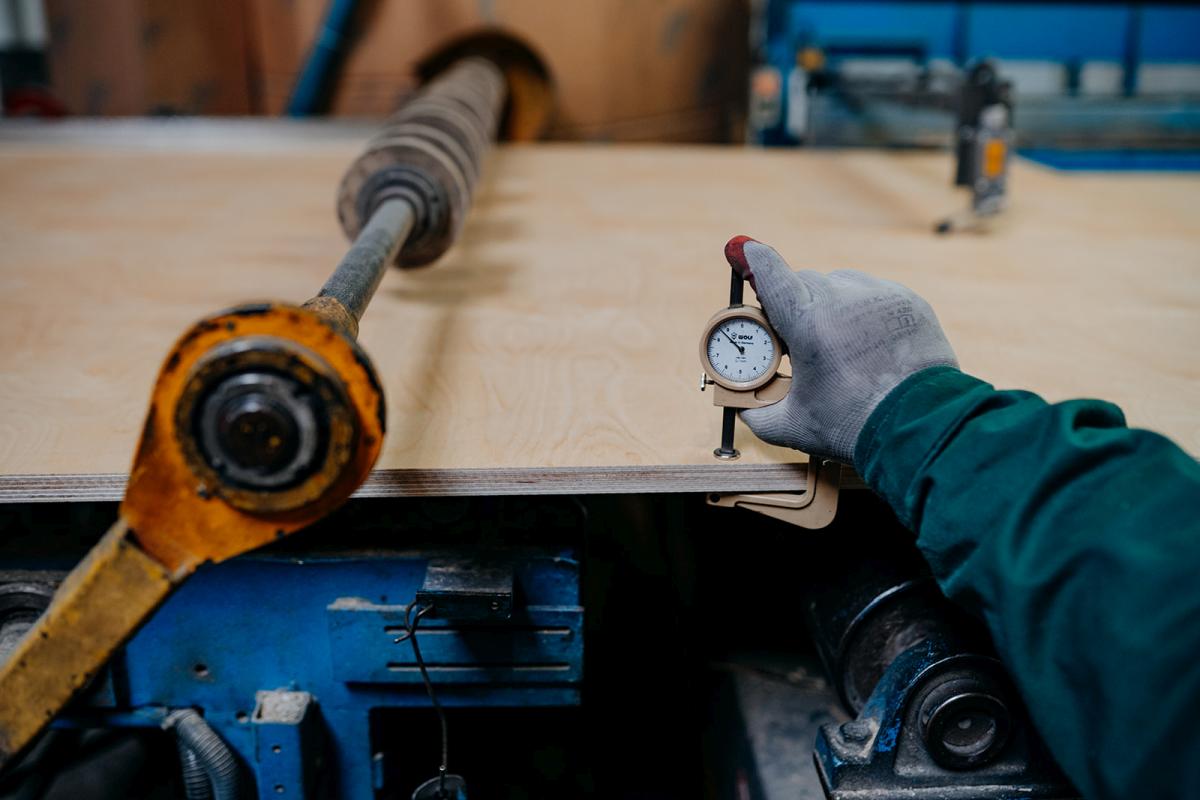Production of plywood
The logs are peeled in a rotary peeling machine by a knife mounted parallel to the log’s axis. In this way we get a continuous wet veneer sheet, which is cut to sizes defined by production process. Standard thickness of veneers is 1.5 mm, but depending on client’s specification it is possible to peel veneers of different thickness too.
Wet veneers undergo the drying process in a roller system through the length of the dryer. The output of this process are dry veneers. The veneers are sorted (quality control), repaired (the defected places are repaired by removing the defect and inserting a patch or wedge) and jointed along or across the fibers so as to make sheets of the required size.
In this production phase veneers are laid-up in assemblies (an assembly – plies of veneers with glue coating every second veneer). Number of plies is determined by the final thickness of plywood. As result of exposure to high temperature and pressure the glue between the plies hardens and the plywood is ready.
Depending on the processing type, the surface of plywood might be coated with:
- film, as result of pressing phenolic or melamine film to plywood surface. A modern panel coating line is used for this process.
- varnish, plywood surface is coated on varnishing line with the UV-hardened varnish,
- oil, plywood is coated with mineral oil, while the edges might be painted with acrylic paint or oil, depending on clients needs,
- polypropylene, as result of pressing 1.6 mm thickness polypropylene on the plywood surface.
Quality control of finished product is based on European Standards or standards delivered by the customer. Both surfaces of plywood are visually inspected by employees of quality control department. At this stage also final mesurements are made. Defective items are reclassified. They are not used for realisation of customer’s order.








